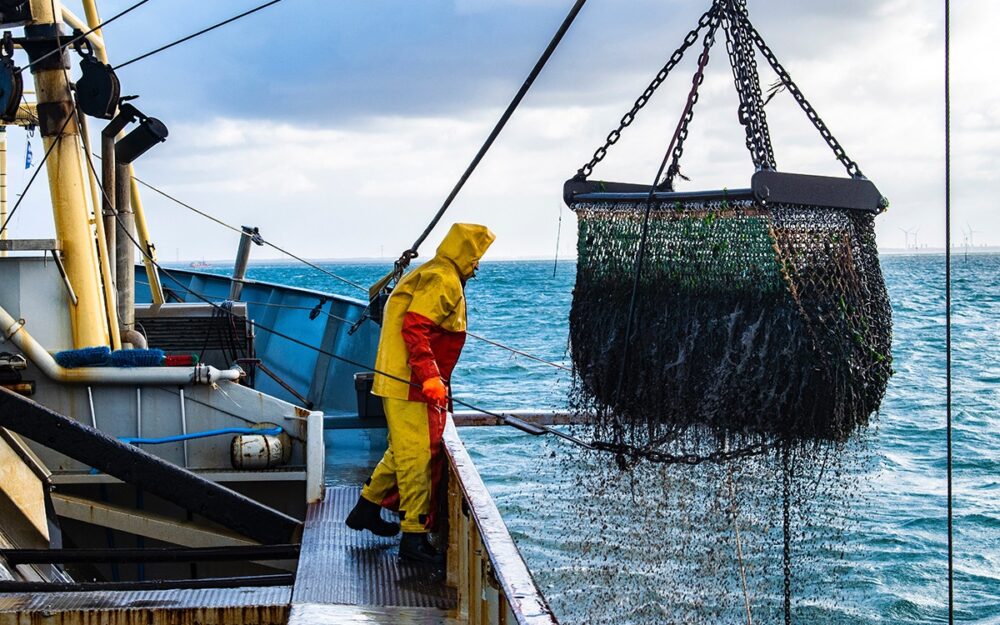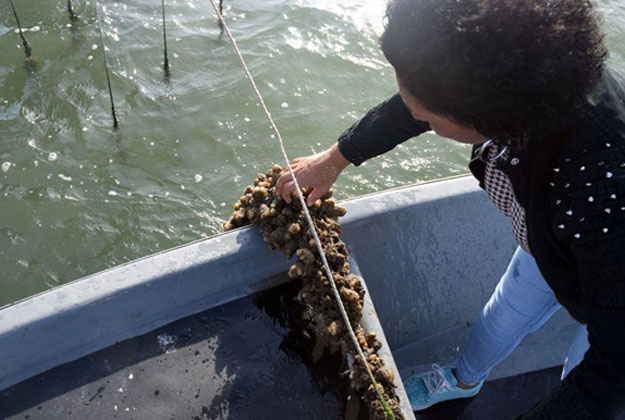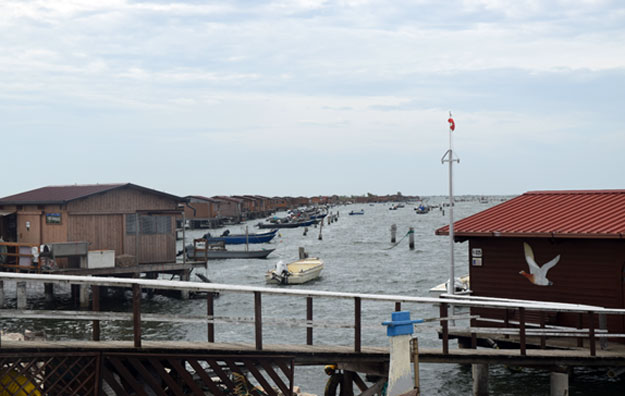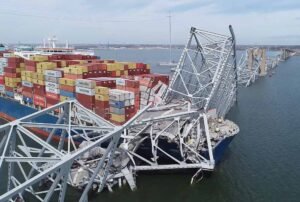
The need to plan for the future in the face of climate collapse does not lie in reformism and adaptation but in a drastic transformation. This starts with acknowledging what is happening in some unexpected places—river deltas. River deltas are rich ecosystems that humans depend on for water, food, and critical biodiversity. They are also highly susceptible to the effects of climate change, but these issues are often not recognized with nearly the urgency or scale needed.
In the US, a groundbreaking collaboration with Mexico is helping the Colorado River Delta see new life again as over the years drought, overconsumption, and water rights issues have significantly decreased the river’s capacity. Key to this effort is over $1 billion of federal support and close partnership with the Mexican government.
The need to plan for the future in the face of climate collapse does not lie in reformism and adaptation but in a drastic transformation.
Similarly, in Northern Italy, the Po River is currently experiencing its worst drought in 500 years. The drought is causing water temperatures to rise, depleting water oxygen concentrations, and impacting biodiversity—all of which are quickly changing the livelihoods of the fishers in the area. But with insufficient funds from the Italian state, and the slow modernization of infrastructure, the people of traditional Po Delta fishing area have been fending for themselves.
The Mediterranean region is the most affected region by extreme weather events in Europe, but neither the Italian government nor the European Union has implemented long-term policies or infrastructure to adequately address the current climatic scenario. Italy’s Climate Resilience Plan only mentions the word “drought” three times. Supported by former Prime Minister Mario Draghi’s cabinet, the plan only allocates €200 million euros (equivalent to roughly $214 million USD) to mitigate drought issues, despite the country suffering €6 billion in drought losses in 2022.
How Life Is Changing on the Po Delta
At the end of the Po River is a five-branch delta. The area, impacted by rising saltwater levels and other effects of climate change, is no longer fertile for fishers who live and work nearby. They now face empty fishing nets and little water left in the canals.

Along the Sacca degli Scardovari, at the far end of the Po Delta, there are lined huts built and occupied by the 1,200 people whose livelihoods depend on the water. Caterina Mancin is one fisher among them, working three mussel farms closest to the sea. “Here we have mixed water, more sweet than salty,” she says. “This makes our product special both in taste and texture.” Unfortunately, this is where the river’s rising temperatures are rapidly changing the marine ecosystem.
In 2022, Mancin lost 50 percent of her mussel farm due to compromised water conditions, which wiped out most of her profits. And the results of her 2023 harvest may not look any better. Mussel farms in the Po Delta are extremely susceptible to climate change due to their small size and shallow depth environment (only up to 10 meters—or nearly 33 feet). These shallow conditions result in more rapid temperature shifts when water conditions change.
Some species—like the mussels Mancin farms—are particularly dependent upon certain conditions, explains Lorenzo Ciccarese, scientist and resource director at L’Istituto Superiore per la Protezione e la Ricerca Ambientale (Higher Institute for Environmental Protection and Research). Increased water temperature leads to decreased oxygen levels, causing stress and death for immobile species like mussels, clams, and shellfish, creating significant pressure on the biodiversity in the area.

With warming waters, lowered oxygen concentrations, and reduced respiration, most marine species now suffer in the delta’s oxygen-deprived, or anoxic, waters.
Mussel farms in the Po Delta are extremely susceptible to climate change due to their small size and shallow depth environment . . . resulting in a more rapid temperature increase when water conditions change.
Water with depleted oxygen concentrations sparks the growth of algae that appears as a white film on the water’s surface. Local fishers call this phenomenon white water. This film is a symptom of the dissolution of all nutrients in the water. “Everything is dead because there is no more oxygen,” says marine biologist Guillaume Marchessaux. “The problem is that with climate change, the frequency of these extreme anoxic events will increase, and the impact on biodiversity is huge.”
Sign up for our free newsletters
Subscribe to NPQ's newsletters to have our top stories delivered directly to your inbox.
By signing up, you agree to our privacy policy and terms of use, and to receive messages from NPQ and our partners.
In addition, the waters have been home to an invasive species: the blue crab. “These phenomena make fishing with traditional nets impossible,” explains Antonio Gottardo, president of Legacoop, an association representing 15,000 Italian cooperatives, including fishers in the Po Delta. “[The blue crab] attacks fish, mussels, other frogs, and green crabs.”

Caught between rising prices and deteriorating environmental conditions, the harvest loss has absorbed much of the fishers’ potential income. Mancin now works every 40 to 50 days, and she checks the state of the growing mussels less frequently—she already knows what she will find. She explains that the previously unseen white algae, now thriving in high-salinity conditions, has spread over the mussels, leading to their suffocation. Fishers, like Mancin, are unsure of the best approach to tackle these issues.
New Solutions but Little Support
The lack of progress in the water sector is a systemic problem that results from slow-moving bureaucracy and the low priority given to improving water infrastructure for local communities that depend on it. “We need an immediate allocation to develop this type of infrastructure,” says Carlo Salvan, president of Coldiretti Rovigo, an association representing and assisting Italian agriculture in the Veneto region. After an allocation is granted, the planning and execution phase—which typically requires several years to complete—can start. However, the river has already been exposed to danger for too long.
The good news is, the solutions are as numerous as the problems. New rainwater retention structures, new fishing methods, and the creation of basins are just some of the long-term solutions proposed by experts in Italy to improve water quality. In the US, some of these same methods are already proving successful, such as rainwater harvesting during California’s recent historic rainfall and sustainable fishing methods to mitigate drought impacts.
However, in Italy, there is a shortage of funds—and political urgency—to implement such solutions. The only measure currently in place is rainwater harvesting, which would help the Po Delta during dry seasons. But progress is slow, with only 11 percent of water being captured. The “Piano Laghetti” project, which would create about 10,000 artificial structures capable of collecting large volumes of water throughout the country, has been presented but not yet implemented.
Local agriculture is in need, too. Ramona Magno, a drought and desertification expert at Consiglio Nazionale delle Ricerche (National Research Council), notes that the irrigation network for agricultural use is practically a sieve, losing water that is needed for crops. This is exacerbated by a 40 percent decrease in rain and snowfall from October 2022 to March 2023. To recoup this loss, “Italy will have to use every [rain]drop several times,” Magno says.
“The first project idea we had is to build a barrier at the mouth of the Po River,” says engineer Rodolfo Laurenti of Consorzio di Bonifica Delta del Po. The project would be similar to a dam and would retain fresh water descending toward the sea, while saltwater coming from the sea would be blocked.
The second idea is to make the canals bigger to help store more water when there is a shortage of rain and snow. While the second project requires only a few months of the planning period, the first needs five years. “And it is clear that this is not enough because if we have five drought seasons, we cannot solve anything,” Laurenti states.
The situation is critical but not irreversible. It can change with a realignment of priorities, such as reducing greenhouse emissions to help increase rainfall. However, the government’s priorities are reflected in the renewal of public subsidies to the fossil fuel industry.
While the fossil fuel industry keeps climate adaptation planning out of the agenda, fishers are asked to be resilient by shifting how and where they fish. The problems of the Po Delta reveal how unsustainable this actually is. “[There are] 1,200 people working here who cannot earn what they spend,” says Mancin. “For many politicians and administrators, we are just numbers to make ends meet.”

What drives the fishers to continue to pursue their livelihoods is their commitment to preserving the environment and protecting local products. Ciccarese warns that we may surpass the two-degree Celsius threshold of global warming if we fail to reduce greenhouse gas emissions. “It is crucial, now more than ever, to tackle the challenges of biodiversity loss and climate change collectively,” he says.
In the US, the urgency to address the shrinking Colorado River was prompted by the impacts of drought, increased water demand from the agricultural industry, and the vulnerability of the 40 million people who depend on it as a water source. Without action, rising water temperatures could eliminate marine life, livelihoods and increase vulnerability of those depend on the Po Delta—and rivers worldwide—permanently.









